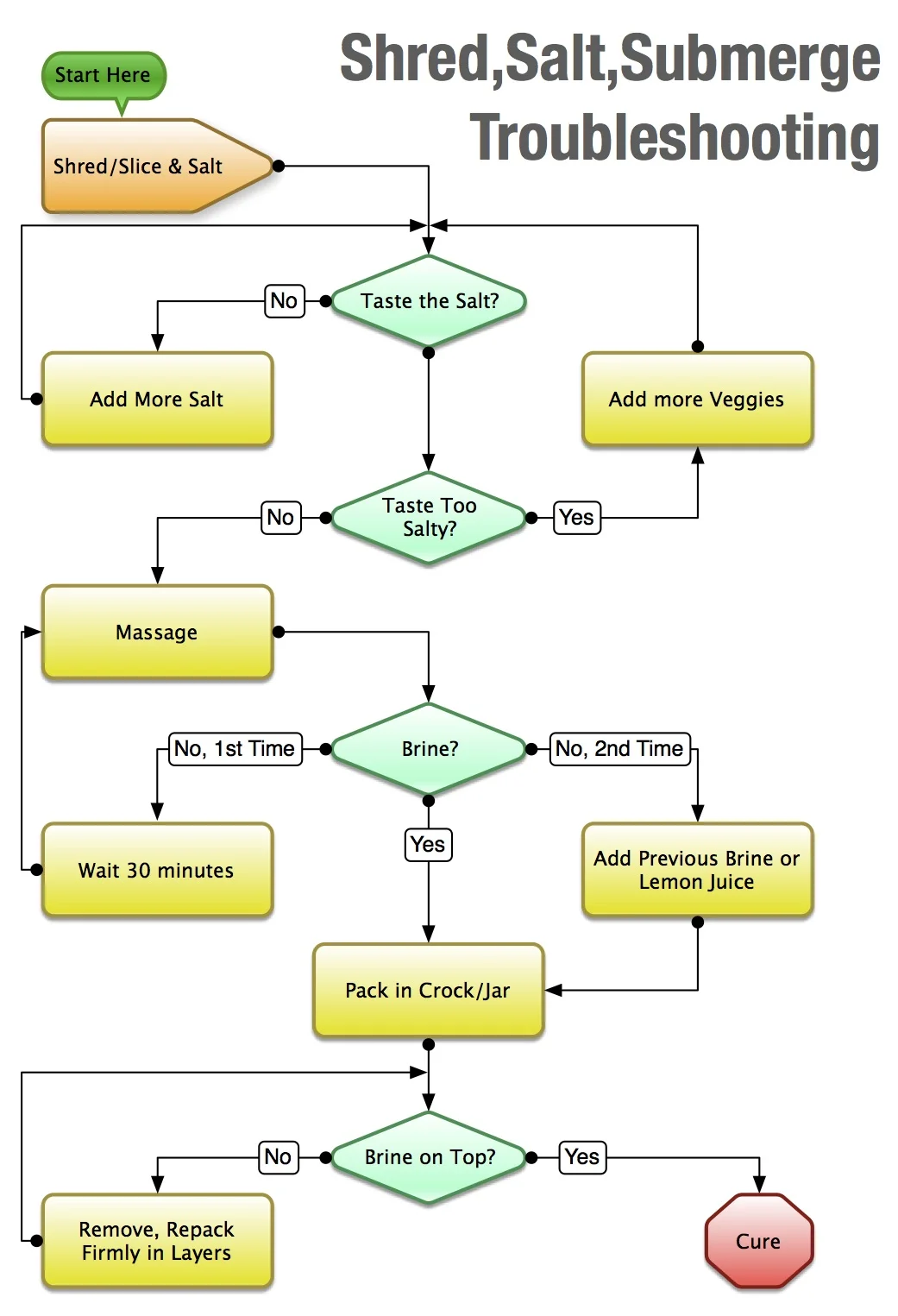We believe the best sauerkraut (cabbage or other vegetables) comes from dry brining. What does that mean? Fair question since the whole point is to make brine in which to submerge the fermenting vegetables. Dry brining simply means creating the brine in fermentation by only adding salt and allowing the vegetable’s natural juices to create the important liquid. No water is added.
This usually works. Once in a while, you are faced with dry cabbages (maybe they were in cold storage too long) and it doesn't work. Oh, what to do? We have created this handy flow chart to help you when you are feeling there is just not enough brine to properly ferment your creation.
If you would like more help check out our simple course on making sauerkraut and pickles, safely and simply. Got your basic game down already? Maybe it’s time to progress to mastering the process.
Handy flowchart to help you make a delicious brine for your sauerkraut (and other fermented vegetables).
Let’s walk through this flowchart, adding some hints along the way.
Start by shredding or slicing your cabbage, then adding the salt, but here is a hint. If all of your cabbage is in the bowl and you salt it and its too salty the flowchart says to add more vegetables. If you only want a cabbage kraut and aren’t interested in dropping in some carrots, onions or the like then don’t add all the salt you intend, then taste. If you don’t taste the salt you can continue adding but if you do you saved yourself heading out to the store for another cabbage before continuing.
How long to massage. In out experience the one getting the massage wants it to last longer than the one giving the massage but that might just be us. For the cabbage a perfect massage is until it starts giving up its water that just before had been locked up in its cabbage cells. Your shredding opened a lot of those up, your massaging continues the trick.
Sometimes there is a delay so that’s why the 30 minute rest break. If you still don’t see enough brine then its time to add some good brine or lemon juice. Why lemon juice? We want the acidity. That’s why we never just add some tap water, never.
Finally you pack your lovely creation away in a jar or crock and wait. When you pack one trick is to do it in layers, rather than just dumping it all in at once. Spoon in a layer, squish down, then repeat as you fill the container. You have a couple of options at this point before setting it on your counter and waiting for yumm.




